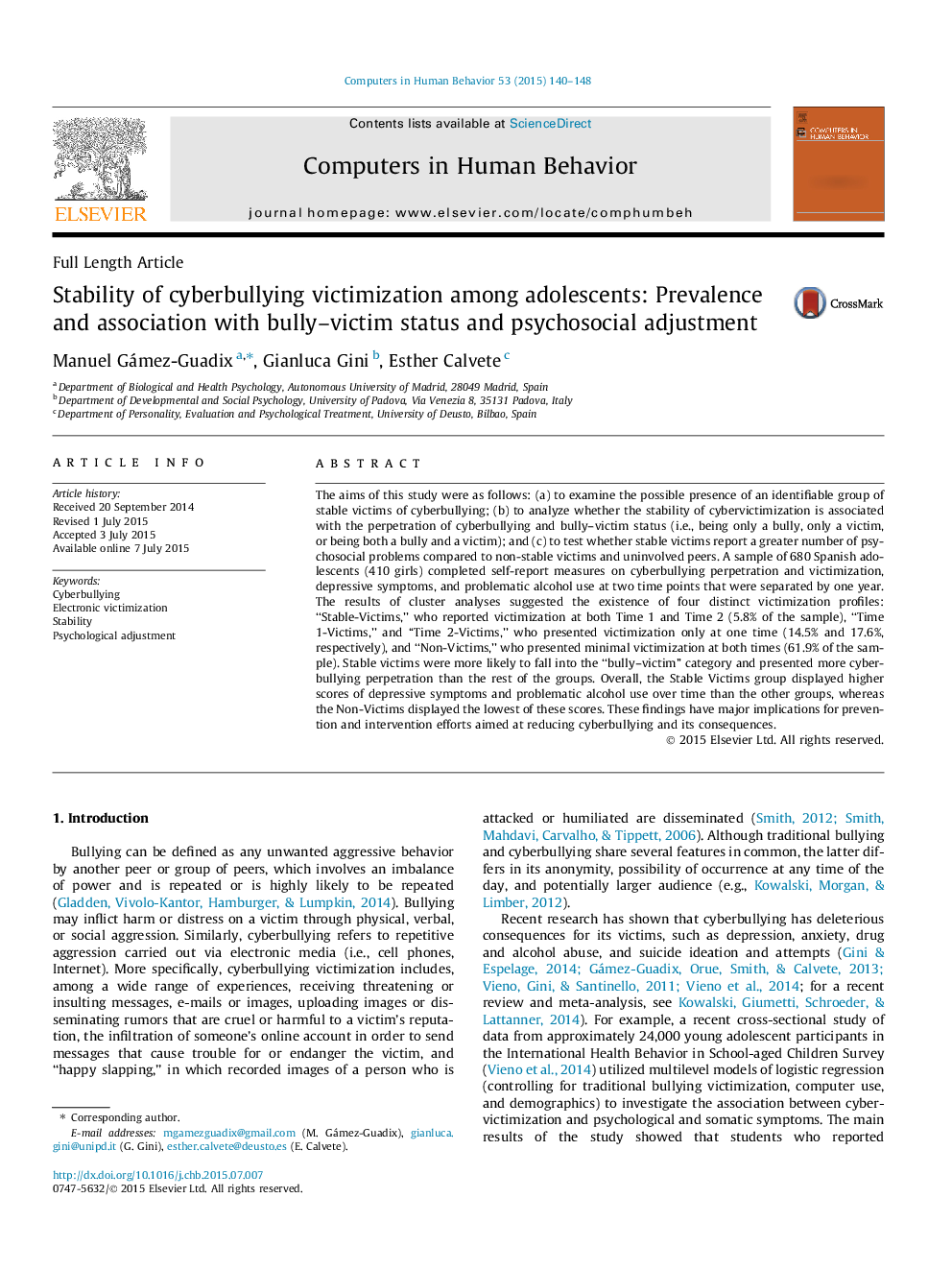| Article ID | Journal | Published Year | Pages | File Type |
|---|---|---|---|---|
| 350092 | Computers in Human Behavior | 2015 | 9 Pages |
•Adolescents show different trajectories of cyberbullying victimization.•5.8% of adolescents were stable victims in a one-year follow-up.•Stable victims were more likely to be “bully–victims.”•Overall, stable victims presented more depression and alcohol use.
The aims of this study were as follows: (a) to examine the possible presence of an identifiable group of stable victims of cyberbullying; (b) to analyze whether the stability of cybervictimization is associated with the perpetration of cyberbullying and bully–victim status (i.e., being only a bully, only a victim, or being both a bully and a victim); and (c) to test whether stable victims report a greater number of psychosocial problems compared to non-stable victims and uninvolved peers. A sample of 680 Spanish adolescents (410 girls) completed self-report measures on cyberbullying perpetration and victimization, depressive symptoms, and problematic alcohol use at two time points that were separated by one year. The results of cluster analyses suggested the existence of four distinct victimization profiles: “Stable-Victims,” who reported victimization at both Time 1 and Time 2 (5.8% of the sample), “Time 1-Victims,” and “Time 2-Victims,” who presented victimization only at one time (14.5% and 17.6%, respectively), and “Non-Victims,” who presented minimal victimization at both times (61.9% of the sample). Stable victims were more likely to fall into the “bully–victim” category and presented more cyberbullying perpetration than the rest of the groups. Overall, the Stable Victims group displayed higher scores of depressive symptoms and problematic alcohol use over time than the other groups, whereas the Non-Victims displayed the lowest of these scores. These findings have major implications for prevention and intervention efforts aimed at reducing cyberbullying and its consequences.
